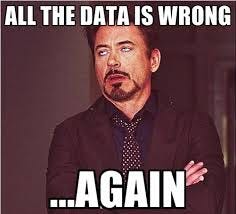Analytics Team: Strategic Partner or Service Org?
Service data org will never lead to a data-driven culture.
Everyone says they want to have a data-driven culture. The benefits are absolutely glorious. Making decisions based on hard data, unifying language across departments, and connecting actions to business outcomes—what could be better than that?
Well, it's not all rainbows and unicorns. In most companies, data is a hot mess. Incorrectly set up, misinterpreted, or even completely neglected. So when you push for a data-driven culture too soon, you spend more time arguing about data validity than making decisions. It's like being stuck in an endless loop of frustration. Yuck!
Enter the analytics team—the unsung heroes who can make sense of the chaos. However, not all data analytics teams are created equal. There are two major types:
Service Data Team: The common setup where they tirelessly answer incoming business questions.
Strategic Data Team: The business partners to product, marketing, and sales.
Proactively feeds business strategic data insights that shape strategy.
Partners with business owners to define and execute analysis needed for priority setting and evaluating launched initiatives.
Owns major company metrics definition and their evolution.
Owns their priorities and roadmap.
Responsible for enabling self-serve analytical capabilities.
Is accountable for a data-driven culture.
Unfortunately, data service organizations face a major challenge—they don't speak the same language as the business. They waste precious time on irrelevant analyses because businesses struggle to ask good data questions, and analysts often lack a solid understanding of the business context. The result? Consistently disappointing outcomes that drive companies back into the warm embrace of intuition-driven decision-making.
Nobody strives for such a disappointing outcome, and nearly every data team prefers to be in a strategic role, but very few get there. Why?
Timing: Data analytics are hired too late, leaving them in a perpetual state of catch-up.
Profiles: Companies make the wrong choice when hiring their first analyst profile.
Resourcing: Analytics teams are often under-resourced and can never catch a break.
Reporting: Analytics teams report to the wrong departments, overshadowed by service-focused teams.
Charter: Data teams are not given the power to define and own their work, stifling their potential.
Let’s dive in.
Timing
The first data analytics hire should happen within the first 25 employees.
Many will object that it is too early. I beg the differ. Sure, you may not have enough data volume yet to make fancy statistical predictions, but this is the time to set up a foundation for the future:
To create and enforce good data hygiene:
Define taxonomy.
Enforce data tracking within the dev lifecycle.
To own definitions and insights across the initial set of metrics.
To have a seat at the table and align analytics to strategic priorities.
To create a trusted source of truth for metrics.
The goal is to have the analytics team be embedded within company processes and culture from the start.
Profiles
There are four main profiles within analytics:
BI Analyst - specializes in report building.
Data Engineer - specializes in data pipelines, connections, and integrity.
Data Scientist - specializes in predictive analytics (statistical modeling, etc).
Data Analyst - a generalist that needs further clarification
Specialization: Product Analyst, Marketing Analyst, Growth Analyst, Sales/Revenue Analyst.
Technical: skilled in SQL and/or Python (often Product and Growth analysts)
Non-technical: core skills in Excel (often Sales/Revenue analysts)
In a product-led growth company, your first hire should always be a technical data analyst. A non-technical sales analyst is the best start in a sales-led growth company.
In any case, the most important superpower of the first analyst should be partnering with business owners to understand and answer business problems through a data lens. But they should be self-sufficient in setting up their own data feeds, performing an analysis, deriving insights, creating visualizations, and communicating their findings.
Avoid first hires being specialists. Data engineers won’t know what data feeds to set up. BI analysts will not know what reports to build. Data scientists shouldn’t create statistical models before basic data analysis.
Resourcing
A useful approach is to align with existing product resources to determine the number of analysts required.
In the initial stages, core product managers can share analysts between two or three PMs. However, as the organization progresses towards a data-driven approach, providing one-on-one support to each PM becomes essential.
Keep reading with a 7-day free trial
Subscribe to Elena's Growth Scoop to keep reading this post and get 7 days of free access to the full post archives.






